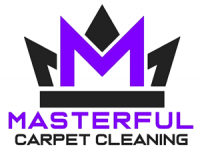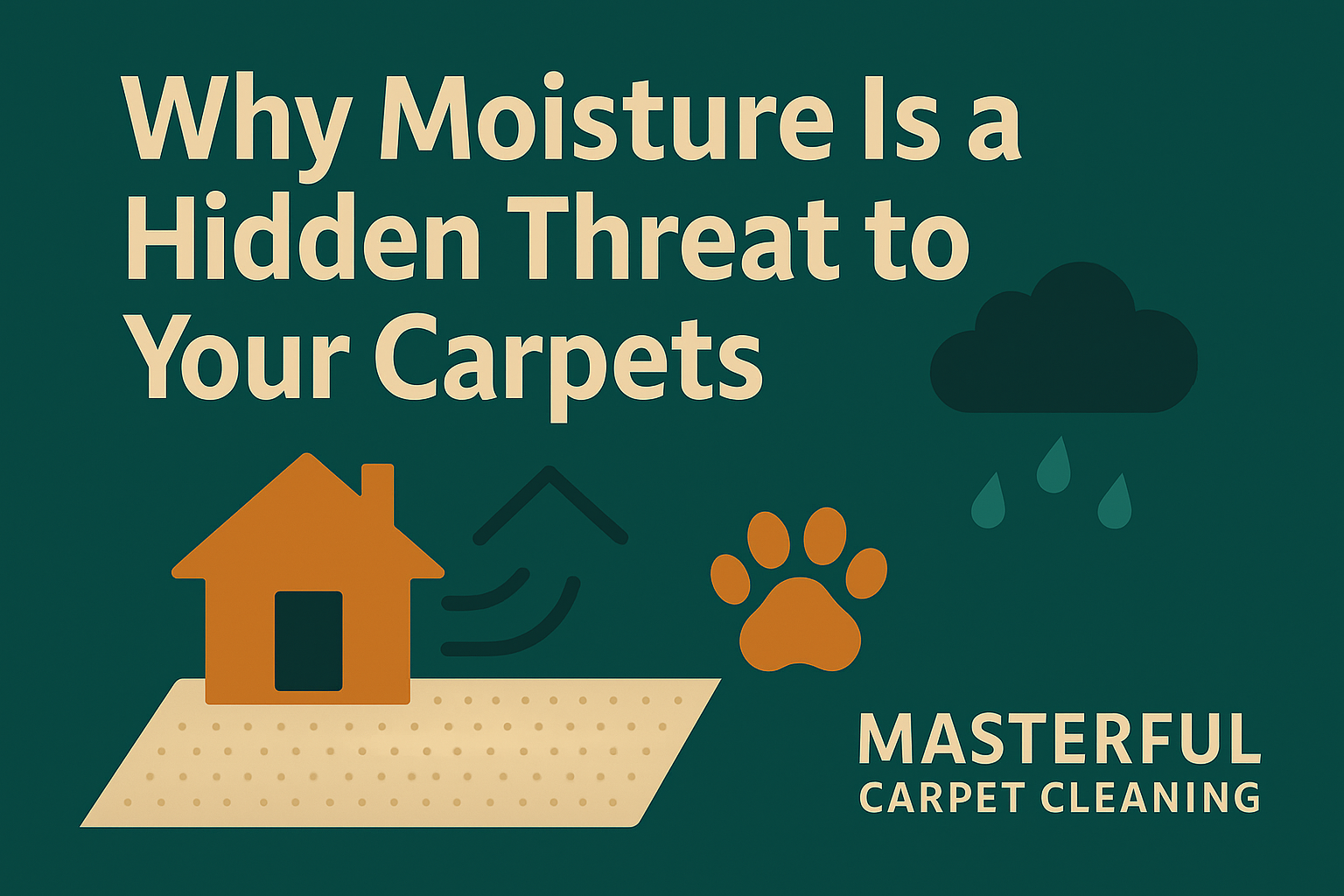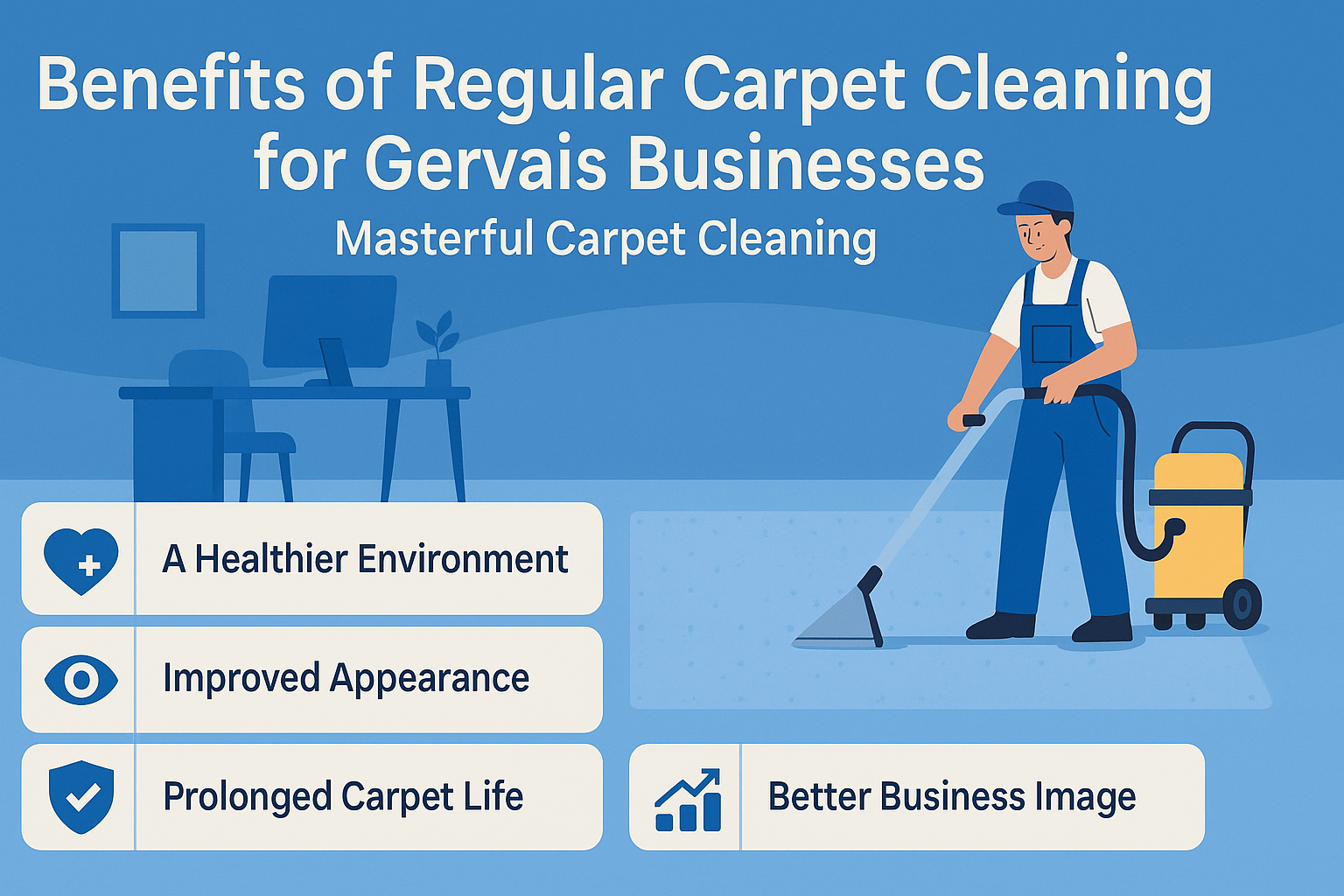Nylon Carpet Care: Strategies for Longevity and Stain Resistance

Nylon carpets are a popular choice for homeowners due to their remarkable durability and stain resistance, making them ideal for busy households and high-traffic areas.
Here are some detailed strategies for maintaining nylon carpets, ensuring their longevity, and enhancing their stain-resistant properties.
Nylon Carpet
Nylon carpet is made from synthetic fibers known for their strength and resilience. This type of carpet is crafted from engineered plastic, making it extremely durable and resistant to wear and damage. Nylon carpets are designed to withstand heavy foot traffic and maintain their appearance over time.
Benefits of Nylon Carpet
- Durability: Nylon carpets are incredibly durable, making them suitable for high-traffic areas such as hallways, living rooms, and stairs. They resist wear and tear, maintaining their structure and appearance even under constant use.
- Stain Resistance: The chemical structure of nylon makes it naturally resistant to stains. Most spills can be easily cleaned before they penetrate deep into the fibers, thanks to the protective treatments often applied during manufacturing.
- Versatility: Nylon carpets are available in a wide range of colors, patterns, and textures. This versatility allows homeowners to choose the perfect carpet to match their interior design and personal style. Nylon can be dyed in various colors, providing extensive design options.
- Resilience: Nylon fibers are highly resilient, meaning they can return to their original shape after being compressed by furniture or foot traffic. This elasticity helps maintain the carpet’s plushness and appearance over time.
By knowing the composition and benefits of nylon carpet, homeowners can appreciate why it remains a top choice for both residential and commercial settings. Its durability, stain resistance, versatility, and resilience make it a practical and long-lasting flooring option.
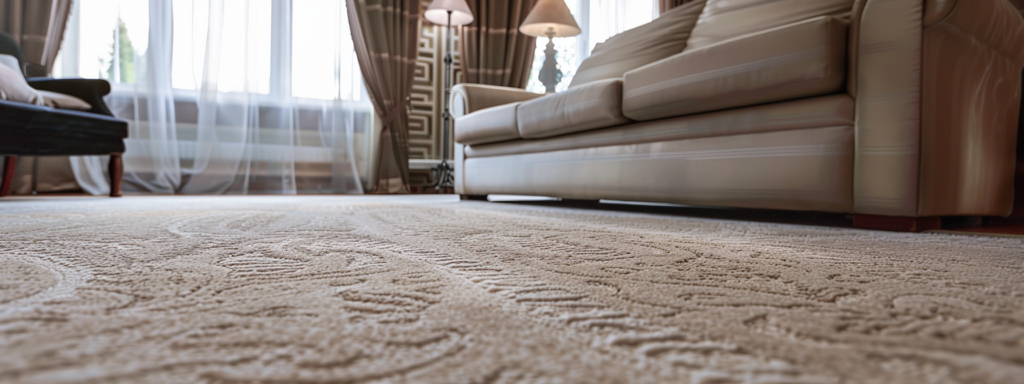
Daily Maintenance Practices
Vacuuming
Regular vacuuming is important for maintaining the cleanliness and longevity of your nylon carpet. It helps to remove dirt, dust, and allergens that can become embedded in the carpet fibers, preventing long-term damage and maintaining a healthy indoor environment.
- Use a vacuum with a rotating brush: A vacuum cleaner equipped with a rotating brush or beater bar is particularly effective for nylon carpets. This type of vacuum helps to lift and agitate the carpet fibers, removing embedded dirt and debris more efficiently than suction alone.
- Vacuum high-traffic areas more frequently: High-traffic areas such as hallways, entryways, and living rooms accumulate dirt more quickly and should be vacuumed daily or several times a week. Less trafficked areas like bedrooms can be vacuumed once a week.
- Adjust vacuum height settings for optimal cleaning: Ensure that your vacuum cleaner is set to the appropriate height for your carpet pile. This adjustment helps to maximize the cleaning efficiency without causing damage to the carpet fibers.
Spot Cleaning
Effective spot cleaning is essential for promptly addressing spills and stains, preventing them from setting and becoming permanent.
- Blot, don’t rub spills: When a spill occurs, immediately blot the area with a clean, white cloth or paper towel to absorb as much liquid as possible. Rubbing can push the spill deeper into the fibers and spread the stain.
- Use manufacturer-approved cleaning solutions: Apply a cleaning solution that is recommended by the carpet manufacturer. These solutions are specifically formulated to clean effectively without damaging the carpet or voiding the warranty.
- Rinse with clean water and blot dry: After applying the cleaning solution, rinse the area with clean water to remove any residue. Blot the area dry with a clean towel to absorb excess moisture, preventing mold and mildew growth.
Regular vacuuming and prompt spot cleaning are key components of daily maintenance for nylon carpets. These practices help to maintain the carpet’s appearance, prevent damage, and extend its lifespan, ensuring a clean and healthy living environment.
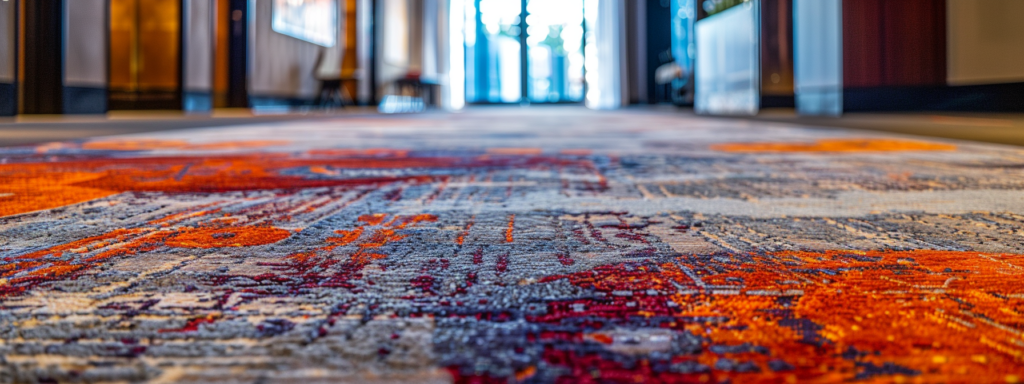
Deep Cleaning Techniques
Professional Cleaning
Periodic professional cleaning is essential for maintaining the appearance and longevity of your nylon carpet. Professional services use advanced equipment and techniques that can reach deep into the carpet fibers to remove embedded dirt and allergens, which regular vacuuming cannot achieve.
- Recommended frequency for deep cleaning: It’s generally recommended to have your carpets professionally cleaned every 12 to 18 months. This frequency can vary depending on the level of foot traffic and whether you have pets or children, who can contribute to more dirt and spills.
- Types of professional cleaning methods:
- Steam Cleaning: Also known as hot water extraction, this method uses high-temperature steam to clean and sanitize the carpet. It’s effective for deep cleaning and removing tough stains.
- Dry Cleaning: This involves using minimal water and special cleaning compounds. It is quicker drying but might not be as thorough as steam cleaning.
- Bonnet Cleaning: This method uses a rotating brush to clean the surface of the carpet. It’s good for quick cleanings but doesn’t penetrate deeply into the fibers.
DIY Deep Cleaning
While professional cleaning is ideal, you can also perform deep cleaning at home using rental equipment and proper techniques.
- Use a rental carpet cleaner with proper cleaning solutions: When using a carpet cleaner, make sure to use solutions that are compatible with nylon carpets to avoid damage. Follow the instructions provided with the rental unit for the best results.
- Follow manufacturer instructions: Always read and adhere to the manufacturer’s guidelines for both the carpet and the cleaning machine. This ensures you do not void any warranties and achieve the best cleaning results.
- Ensure thorough drying to prevent mold growth: After cleaning, ensure the carpet is completely dry before placing furniture back or walking on it. Use fans, open windows, or a dehumidifier to speed up the drying process. Proper drying prevents mold and mildew, which can damage the carpet and affect indoor air quality.
Regular professional cleaning and occasional DIY deep cleaning are important for maintaining the beauty and health of your nylon carpet. These practices help remove deep-seated dirt and allergens, ensuring a clean and comfortable living environment.

Preventive Measures for Stain Resistance
Use of Carpet Protectors
Carpet protectors enhance the stain resistance of your nylon carpet by providing an additional layer of protection. These treatments are designed to repel liquids and prevent stains from penetrating the carpet fibers.
- Application of stain-resistant treatments: Applying a stain-resistant treatment, such as a fluorochemical coating, helps to prevent stains by reducing the wetting of the carpet surface. This means spills and dirt are less likely to bond with the fibers and can be cleaned up more easily. Treatments like Shaw’s R2X Stain & Soil Resistance Technology are particularly effective as they are molecularly bonded to the carpet fibers, providing long-term protection.
- Benefits of reapplying treatments periodically: Over time, the effectiveness of stain-resistant treatments can diminish due to wear and cleaning. Reapplying these treatments periodically helps to maintain the protective barrier, ensuring your carpet remains resistant to spills and stains. Regular maintenance can significantly extend the life of the carpet and preserve its appearance.
Area Rugs and Mats
Using rugs and mats in strategic locations helps protect high-traffic areas of your carpet from dirt, wear, and stains.
- Place mats at entryways: Entry mats trap dirt and moisture from shoes, preventing these contaminants from being tracked onto your carpet. This simple step can reduce the amount of soil and stains that your carpet is exposed to, particularly in busy areas like entrances and hallways.
- Use area rugs in busy rooms: Placing area rugs in high-traffic areas such as living rooms and dining rooms helps to distribute wear more evenly and protects the underlying carpet. Area rugs can absorb the impact of foot traffic and are easier to clean or replace than wall-to-wall carpeting.
- Rotate rugs regularly to distribute wear: Regularly rotating your area rugs ensures that no single section of the carpet endures excessive wear. This practice helps maintain a uniform appearance and prolongs the life of both the rugs and the underlying carpet.
Implementing these preventive measures can greatly enhance the stain resistance and longevity of your nylon carpet. By using carpet protectors and strategically placing rugs and mats, you can keep your carpet looking new and extend its lifespan. Regular maintenance and thoughtful care are key to enjoying the full benefits of your nylon carpet.
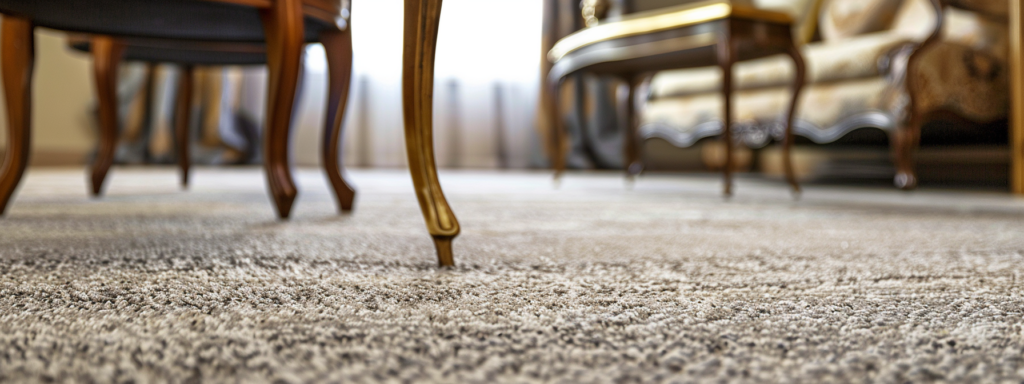
Common Mistakes to Avoid
Overwetting During Cleaning
Using too much water during carpet cleaning can lead to several problems, including mold growth, damage to carpet fibers, and extended drying times. It’s important to manage water usage carefully.
- Risks of over-wetting (e.g., mold growth, damage to carpet fibers): Excessive moisture can lead to mold and mildew development, unpleasant odors, and even carpet shrinkage or delamination (separation of the carpet backing). Overwetting can also cause water to seep into the carpet padding and subfloor, leading to structural damage.
- Tips for proper water usage: Use only the necessary amount of water or cleaning solution as recommended by the manufacturer. Ensure thorough extraction of moisture by using high-quality equipment and avoid saturating the carpet. Utilize fans, dehumidifiers, and open windows to expedite the drying process and prevent mold growth.
Using Harsh Chemicals
Harsh chemicals can cause significant damage to nylon carpets, including discoloration and weakening of the fibers. It’s important to choose appropriate cleaning products.
- Potential damage from bleach and high-pH cleaners: Bleach and other high-pH cleaners can strip color from nylon carpets, leading to unsightly patches and weakening the carpet fibers. These chemicals can also leave residues that attract dirt, making the carpet look dirty faster.
- Safer alternatives for cleaning: Opt for carpet specific cleaners or those recommended by the carpet manufacturer. These products are formulated to clean effectively without damaging the carpet. Always test new cleaning solutions on a small, inconspicuous area before widespread application to ensure they do not cause adverse reactions.
Ignoring Manufacturer Guidelines
Following manufacturer guidelines is essential for maintaining your carpet’s warranty and ensuring its longevity.
- Using recommended cleaning products: Using products that are not approved by the manufacturer can void your carpet’s warranty and potentially damage the carpet. Manufacturer recommended products are specifically designed to work with the carpet’s materials and treatments.
- Consequences of neglecting manufacturer instructions: Ignoring the care instructions provided by the manufacturer can lead to premature wear and damage. It may also result in voiding the warranty, leaving you unprotected against defects and issues that could have been covered.
Implementing these best practices ensures your nylon carpet remains in excellent condition, providing durability and enhanced stain resistance.
Author
-

As the Co-Owner of Masterful, Randy has been providing quality cleaning services to the Salem and Portland areas of Oregon for many years. He has built a reputation for excellence in the industry. His team take prides in using the latest cleaning techniques and technologies to deliver exceptional results every time.
View all posts
